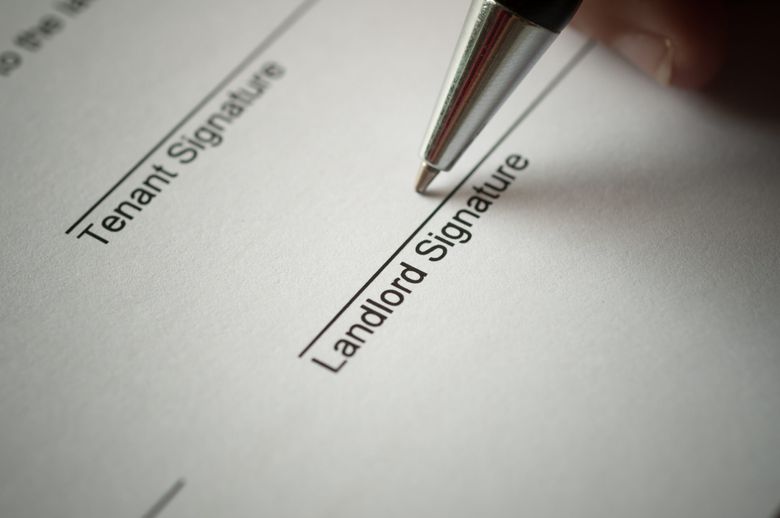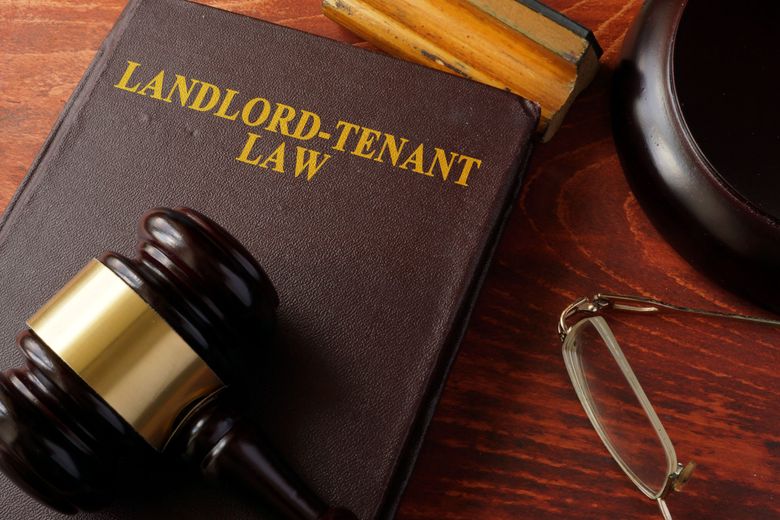A Guide To Writing The Perfect Move Out Letter
Imagine yourself in the shoes of a landlord. Your tenant’s lease is nearing its end, and you’re looking for a way to make the transition as smooth as possible, avoiding any potential conflicts or misunderstandings. What’s the best approach? A well-drafted move out letter to your tenant!
If you’re new to this entire process, don’t worry. Having conversed with landlords who are also Swiftlane customers, I’ve had the opportunity to gain a comprehensive understanding of the intricacies involved in the tenant move-out process.
In this blog post, I’ll share this knowledge that could be immensely beneficial to individuals navigating this procedure for the first time, aiming to cultivate a positive landlord-tenant relationship.
Let’s walk through the process of creating a move-out letter, discussing its purpose, key elements, and offering advice on handling special circumstances.
Key Takeaways
- Say goodbye to your rental with a move-out letter that includes all the key components.
- Consult your lease agreement and local laws for the required notice period before sending out the letter 30-60 days in advance.
- Do tenant screening, have clear lease clauses & create a move out checklist, easy transition guaranteed!
Purpose of a Move Out Letter
A move-out letter is like a formal memo from the landlord to the tenant, laying out the move-out procedure and what’s expected of both sides. It is different from an eviction notice, which is a court-ordered removal.
Things to keep in mind:
- The primary goal of a move-out letter is facilitating an easy transition for both the tenant and landlord.
- It helps the tenant meet their obligations before moving out and assists the landlord in quickly finding a new occupant.
- Tenants should be well aware of their lease agreement and its expiration date to avoid any surprises.
- If a tenant decides to move out early, they should write a polite early termination letter and provide ample notice.
- Good communication is key to maintaining a healthy landlord-tenant relationship.
The Benefits of Sending a Move out Letter
Sending a move-out letter or notice to your tenant has several benefits:
1. Legal Requirement: In many rental agreements, providing written notice is a legal requirement. Failing to do so might result in lease violations or financial penalties. A move-out letter helps ensure you comply with these legal obligations.
2. Clarity: A written move-out letter clearly communicates your intention to vacate the rental property, including the exact date of the departure. This clarity helps both you and your tenant plan accordingly.
3. Documentation: A move-out letter creates a written record of your intention to ask your tenant to move, which can be valuable in case of any disputes or misunderstandings with your tenant. It provides proof that you provided notice and acted in accordance with your lease terms.
4. Security Deposit: If you want to ensure the return of the security deposit given by the tenant, providing a move-out letter allows you to conduct a final inspection and address any issues that may affect the return of the deposit. It gives you an opportunity to rectify any problems before you ask your tenant to leave.
5. Professionalism: Sending a move-out letter is a professional and courteous way to communicate your departure.
6. Record of Condition: In the move-out letter, you can include details about the property’s condition at the time of departure. This can help prevent disputes about the property’s condition before your tenant moves out.
7. Timing: A move-out letter allows you to specify the timing of the departure, ensuring that you and your tenant are on the same page regarding move-out dates and expectations.
8. Planning: It helps you plan and make arrangements for any necessary repairs or maintenance before the next tenant moves in.
9. Communication: Open and clear communication through a move-out letter can help maintain a positive landlord-tenant relationship.
Difference Between a Notice to Vacate, a Lease Termination Letter, and Termination of Tenancy
Although they may sound alike, a Notice to Vacate, a Lease Termination Letter, and Termination of Tenancy all refer to the same thing: a document that informs the tenant it’s time to pack up and go. Property managers and landlords use these documents to communicate with tenants about their move-out process.
A Notice to Vacate is a legal document sent from a landlord to a tenant, or vice versa. This document serves as a notice to the tenant that they need to move out of the residence. Delivery of the Notice to Vacate letter in a manner that confirms receipt, like certified mail, hand-delivery, or prominently placed on the property, is necessary.
What should be the notice period- 30-day notice or 60-day notice?
The notice period for a move-out letter depends on the lease agreement and local laws.
Things to remember:
- In general, 30-day notices are commonly used for month-to-month leases, while 60-day notices apply to fixed-term leases.
- Verifying state and local laws to ascertain the suitable notice period for your rental property is imperative.
- Maintaining a good landlord-tenant relationship means providing tenants adequate time to prepare for their move and meet their obligations, such as the need to pay rent.
- Always consult your lease agreement and state and local laws to ensure you comply with the required notice periods.
Key Components of a Move Out Letter
When composing a move-out notice letter, it’s crucial to incorporate certain elements that offer vital details to both the landlord and the tenant. Here are the key elements that a move-out notice letter should contain:
- Notification Date: Start the letter by explicitly stating the date the notice is being issued. This helps set the timeline for the move-out procedure.
- Move-Out Date: Clearly state the planned move-out date. This enables both parties to plan and ensures a seamless transition.
- Lease Agreement Title and Date: Mention the title of the lease agreement and the date it was signed. This assists in identifying the exact agreement that is being ended.
- Reasons for Moving Out: Succinctly state the reasons for moving out. This could be due to factors such as job relocation, family matters, or the lease term ending. Providing a clear reason helps the landlord comprehend the tenant’s situation.
- Day of Final Walkthrough: Specify the date and time for the final inspection of the rental property. This gives both the landlord and the tenant a chance to evaluate the property’s condition and discuss any potential deductions from the security deposit.
- Name and Signature: The letter should be signed by both the landlord and the tenant, indicatin g their agreement to the terms mentioned in the notice. This ensures clarity and responsibility for both parties involved.
Legal Requirements and Notice Periods
Landlords are responsible for abiding by state and local laws when it comes to the move-out process. The legal requirements for a move-out letter depend on the state and the terms of the lease agreement, but typically, landlords require written notice from tenants indicating their intention to vacate the property. Notice periods can vary, but generally, 30-day notices are used for month-to-month leases, and 60-day notices for fixed-term leases.
Acquainting yourself with the lease agreement and the specific local and state laws to explicitly identify the requirements is necessary. To ensure compliance, it’s always a good idea to seek advice from a legal professional or consult your lease agreement for specific guidelines and requirements.
Sample Move Out Letter Templates for Landlords
To help landlords craft a professional move-out letter, here are three customizable templates to use.
Handling Special Circumstances and Exceptions
During the lease period, special circumstances like early lease termination, medical issues, or military deployment may surface. Landlords and tenants need to exhibit flexibility and understanding in these instances.
Tenants may be able to break their lease without penalty due to the following reasons:
- Domestic violence
- Sexual assault
- Harassment
- Stalking
- Medical reasons
- Military deployment
In such cases, tenants should provide formal written documentation, such as a doctor’s note, military orders, or a letter from their commanding officer, to support their request for early lease termination.
Communication Tips for Landlords and Tenants
Sustaining open and respectful dialogue throughout the move-out process is key to averting misunderstandings and conflicts.
Things to keep in mind:
- Landlords and tenants should actively engage in dialogue, discussing any concerns or questions that arise during the move-out process.
- By communicating openly, both parties can ensure a smooth transition and a positive end to their landlord-tenant relationship.
- Timely and clear communication can also help avoid any nasty surprises, such as unexpected rent increases or lease violations.
- By fostering a positive communication dynamic, landlords and tenants can work together to address any issues or concerns that may arise during the move-out process.
Create a Move Out Checklist
A tenant move-out checklist is a crucial tool for both landlords and tenants to ensure a smooth and fair transition at the end of a lease agreement. Here’s a comprehensive move-out checklist that covers various aspects of the process:
1. Notice and Communication
– Provide proper notice to the landlord or property management as per the lease agreement.
– Communicate your move-out date and intentions in writing.
2. Review Lease Agreement
– Carefully review the terms of your lease agreement to understand move-out requirements, such as notice period and cleaning obligations.
3. Preparing the Property
– Begin the process of cleaning and repairing the property well in advance of your move-out date.
– Remove all personal belongings and trash from the premises.
4. Cleaning and Repairs
– Clean all rooms thoroughly, including floors, walls, windows, and appliances.
– Repair any damage or wear and tear caused during your tenancy. This may include patching holes in walls, fixing leaks, or replacing broken fixtures.
– Steam clean carpets, if required.
5. Utilities and Services
– Notify utility companies of your move-out date and arrange for final readings and billing.
– Disconnect all utilities in your name, including water, gas, electricity, and internet/cable.
6. Return Keys and Access Devices
– Return all keys, access cards, or garage door openers to the landlord or property management.
– Ensure all copies of keys are returned.
7. Security Deposit
– Discuss the return of your security deposit with the landlord or property manager.
– Document the property’s condition with photos to resolve any disputes.
8. Final Walk-Through
– Schedule a final walk-through with the landlord or property manager.
– Go through the property together to address any concerns or outstanding issues.
9. Address Change
– Update your address with the postal service, banks, credit card companies, and any other relevant institutions.
10. Forwarding Mail
– Set up mail forwarding with the postal service to ensure you receive any mail sent to your old address.
11. Cleaning Supplies and Trash Removal
– Dispose of any remaining cleaning supplies or trash properly.
– Empty and clean all trash cans.
12. Restore Landscaping
– If responsible for yard maintenance, ensure the yard is in good condition and any damaged landscaping is addressed.
13. Return of Deposits and Keys
– Ensure that all deposits are returned as agreed upon in your lease.
– Confirm the return of keys and access devices.
14. Final Documentation
– Keep copies of all move-out documentation, including photos, receipts for repairs, and communication with the landlord.
15. Change of Contact Information
– Provide your new contact information to the landlord or property management in case they need to reach you after your move.
16. Cancel Services
– Cancel any services that were in your name, such as internet or cable.
Move Out Inspection and Security Deposit Refund
A move-out inspection is a walkthrough of the rental property conducted by the landlord and tenant to check for any damage or unauthorized alterations before the tenant vacates the property.
Things to keep in mind:
- This inspection allows both parties to discuss any potential deductions from the security deposit and resolve any disagreements in a timely and amicable manner.
- After the move-out inspection, the landlord should evaluate the property’s condition and compare it to the move-in condition.
- If any damage beyond normal wear and tear is identified, the landlord can deduct the cost of repairs from the tenant’s security deposit.
- If the property is in good condition, the landlord should return the security deposit to the tenant within the time frame specified in the rental agreement.
Preventing Future Issues: Tenant Screening and Lease Clauses
For a seamless landlord-tenant relationship and to avoid future complications, it is critical to conduct a comprehensive tenant screening and have explicit lease clauses.
Things to keep in mind:
- Tenant screening helps landlords find responsible and reliable tenants, reducing the likelihood of disputes or disagreements during the lease period.
- Clear lease clauses provide both parties with a solid understanding of their rights and responsibilities, helping to prevent future misunderstandings or issues.
- By establishing a strong foundation through tenant screening and well-defined lease clauses, landlords and tenants can work together to maintain a positive and mutually beneficial relationship.
Let’s Wrap Up!
In conclusion, a well-crafted move-out letter serves as a vital tool for ensuring a smooth transition during the move-out process. By understanding the purpose, legal requirements, and essential components of a move-out letter, landlords and tenants can work together to prevent misunderstandings and disputes. Open communication, thorough tenant screening, and clear lease clauses are also critical for maintaining a positive landlord-tenant relationship and preventing future issues. With these guidelines in mind, both landlords and tenants can navigate the move-out process with ease and confidence.
Sources
- https://www.mysmartmove.com/SmartMove/blog/landlord-letter-to-tenant-move-out.page
- https://www.rentspree.com/blog/notice-to-vacate
- https://www.apartmentguide.com/blog/break-your-lease-without-a-penalty/
- https://www.apartmentguide.com/blog/sample-notice-to-vacate-letter-to-your-apartment-manager/
- https://www.steadily.com/faq/guide-to-writing-a-notice-to-vacate
- https://www.pinnaclepmc.com/blog/move-out-letters-guide
Frequently Asked Questions
How to write notice to vacate from tenant to landlord template?
Dear [landlord or property manager’s name], this letter serves as my written notice to vacate on [DD/MM/YYYY].
I request to terminate the lease, which was signed and agreed upon on [start of lease date], and will be moving out of the property at [current full address] by [DD/MM/YYYY].
How do I write a quit letter to a tenant?
Dear [Tenant First Name(s)] [Tenant Last Name(s)], this Notice is to inform you that you have violated [lease term violated] of your rental agreement for [Property Address, Unit Number], signed on [lease date].
You are required to vacate the property within __ days from the date of this letter and surrender possession of it. The Notice to Quit must include the name of the landlord, tenant, address of the rental property, reason for the notice, date by which to vacate, explanation for why, if applicable, information about the move-out procedure, and contact information for any questions.
What is the purpose of a move-out letter?
A move-out letter is a formal notification from landlord to tenant, outlining expectations and the process for a smooth move-out.
How much notice should be given for a move-out letter?
When moving out, it’s best to give a 30-day notice for month-to-month leases and 60-day notice for fixed-term leases.
How can landlords and tenants maintain a positive relationship during the move-out process?
Maintain open communication, respect each other’s needs and expectations, and meet any deadlines set to ensure a positive landlord-tenant relationship during the move-out process.














